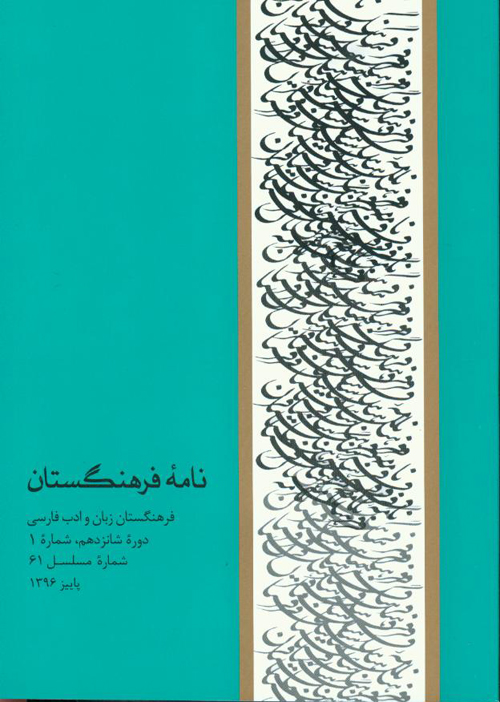Suggestions to Compilers of Bilingual Dictionaries of Persian
Author(s):
Abstract:
The present article puts forth the following recommendations/suggestions for compiling bilingual dictionaries of Persian:1. Entries Compilers of bilingual dictionaries cannot but use the lexical items already collected in monolingual dictionaries. However, most monolingual dictionaries contain fake entries from the Dasātir Book as well as distorted, misspelled, dialectal, or fabricated entries plus entries with no true etymological origins. To ensure an archaic Persian word is attested in old texts, a number of electronic sources such as ‘Dorj’, ‘Geography of the Islamic World’, or ‘History of Islamic Iran’ can be consulted. These packages include many ancient Persian texts and are equipped with userfriendly search engines.2. Compounds (Subentry)Zgusta proposes a number of criteria for identifying multi-word lexical units. Most bilingual dictionaries of Persian fail to base their subentry selectionand lemmatization on these criteria.3. Location of the compoundsThe best way to place a compound is right under the headword entry of thatcompound.4. Subentries repeated in different placesIn bilingual dictionaries of Persian, most subentries have been repeated in two or more places since they were not originally placed under their headword entry. In most cases, different definitions (meanings) are given for these subentries repeated in different places.5. Compounds wrongly recorded In Persian dictionaries, compound verbs and phrasal verbs should be cited in their infinitive forms rather than in their conjugated forms.6. Sources for collecting lexical units Compilers of bilingual dictionaries of Persian should base their work on one or more authorized dictionaries and borrow entries and subentries from these authorized sources.7. Phonological transcription- In dictionaries which already provide phonological transcriptions, it will be redundant to use Arabic diacritics (such as shaddah, sukūn, restricted alif, fathah, dammah, kasrah).- In certain Latinate and some rare Persian words, a special sequence of a vowel followed by a consonant is observed that must be transcribed as -uvor -uw-.8. Separation and integration of homophones and homographs - Homophonous and homographic words that share no common roots should be included as independent entries.
Language:
Persian
Published:
نامه فرهنگستان, Volume:13 Issue: 2, 2014
Pages:
39 to 57
magiran.com/p1293830
دانلود و مطالعه متن این مقاله با یکی از روشهای زیر امکان پذیر است:
اشتراک شخصی
با عضویت و پرداخت آنلاین حق اشتراک یکساله به مبلغ 1,390,000ريال میتوانید 70 عنوان مطلب دانلود کنید!
اشتراک سازمانی
به کتابخانه دانشگاه یا محل کار خود پیشنهاد کنید تا اشتراک سازمانی این پایگاه را برای دسترسی نامحدود همه کاربران به متن مطالب تهیه نمایند!
توجه!
- حق عضویت دریافتی صرف حمایت از نشریات عضو و نگهداری، تکمیل و توسعه مگیران میشود.
- پرداخت حق اشتراک و دانلود مقالات اجازه بازنشر آن در سایر رسانههای چاپی و دیجیتال را به کاربر نمیدهد.
In order to view content subscription is required
Personal subscription
Subscribe magiran.com for 70 € euros via PayPal and download 70 articles during a year.
Organization subscription
Please contact us to subscribe your university or library for unlimited access!


